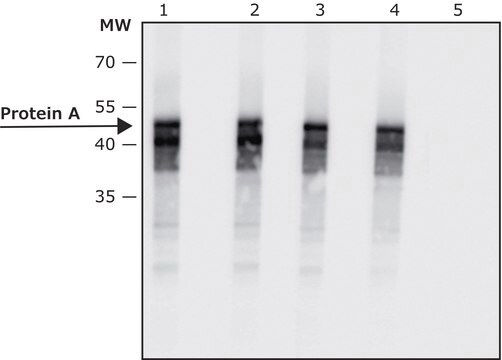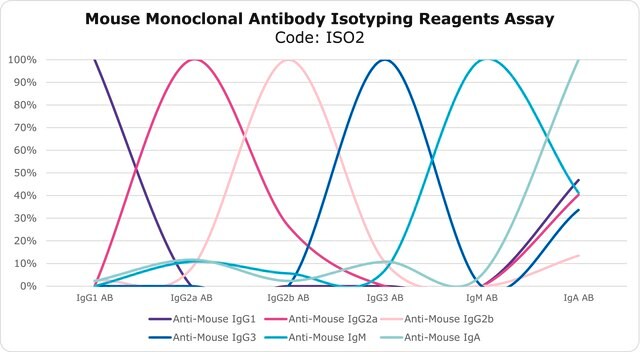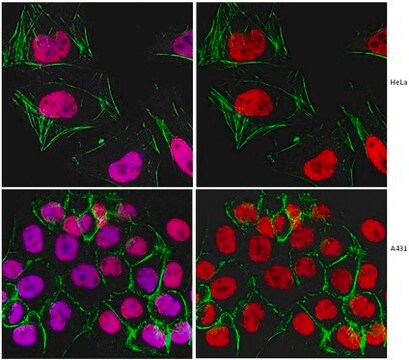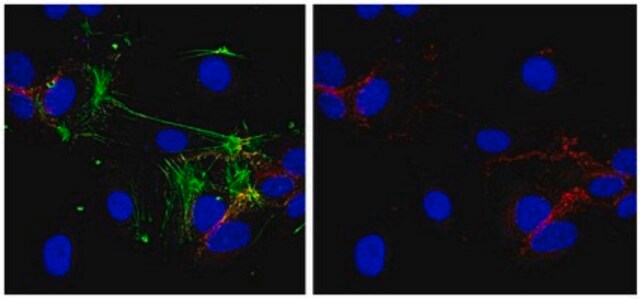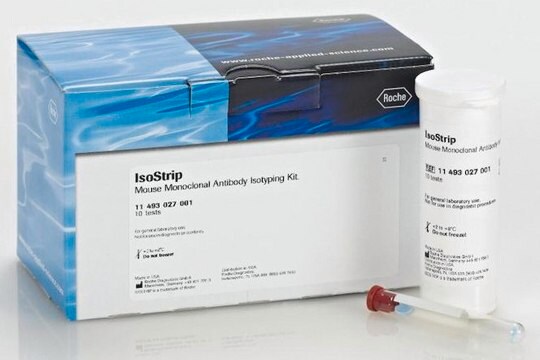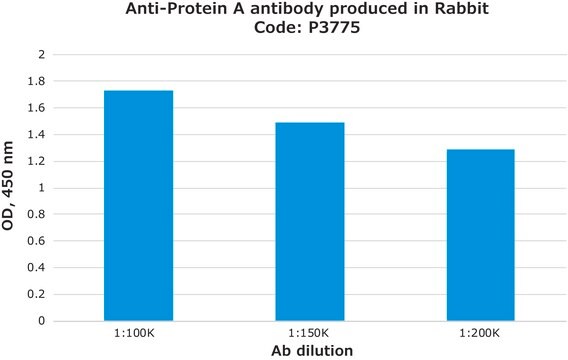P2921
Monoclonal Anti-Protein A antibody produced in mouse
clone SPA-27, ascites fluid
Synonym(s):
Monoclonal Anti-Protein A
Sign Into View Organizational & Contract Pricing
All Photos(1)
About This Item
UNSPSC Code:
12352203
NACRES:
NA.46
Recommended Products
biological source
mouse
Quality Level
conjugate
unconjugated
antibody form
ascites fluid
antibody product type
primary antibodies
clone
SPA-27, monoclonal
contains
15 mM sodium azide
technique(s)
immunocytochemistry: suitable
indirect ELISA: 1:20,000
western blot: suitable
isotype
IgG1
shipped in
dry ice
storage temp.
−20°C
target post-translational modification
unmodified
Looking for similar products? Visit Product Comparison Guide
General description
Protein A is a 42 kDa single chain polypeptide isolated from the cell wall of Staphylococcus aureus Cowan I strain.
Specificity
Specific for Protein A and shows no cross-reactivity with Protein G. Reacts with free Protein A or IgG bound Protein A and does not interfere with the Fc binding activity of Protein A.
Immunogen
protein A from Cowan I strain of Staphylococcus aureus.
Application
Monoclonal Anti-Protein A antibody produced in mouse has been used in enzyme-linked immunosorbent assay (ELISA). It has also been used in western blot and dot blot analyses.
Biochem/physiol Actions
Protein A is considered as a universal reagent in biochemistry and immunology, due to its affinity for the Fc region of many mammalian immunoglobulins. It is used for different applications such as purification of immunoglobulins by affinity chromatography, cell surface studies, radioimmunoassay (RIA), enzyme immunoassay (EIA), immunoprecipitations and many other procedures. It can be used in these methods either in its native form or conjugated to various markers.
Physical form
Monoclonal Anti-Protein A antibody produced in mouse is provided as ascites fluid with 15 mM sodium azide.
Disclaimer
Unless otherwise stated in our catalog or other company documentation accompanying the product(s), our products are intended for research use only and are not to be used for any other purpose, which includes but is not limited to, unauthorized commercial uses, in vitro diagnostic uses, ex vivo or in vivo therapeutic uses or any type of consumption or application to humans or animals.
Not finding the right product?
Try our Product Selector Tool.
Storage Class Code
10 - Combustible liquids
WGK
nwg
Flash Point(F)
Not applicable
Flash Point(C)
Not applicable
Choose from one of the most recent versions:
Already Own This Product?
Find documentation for the products that you have recently purchased in the Document Library.
Dane Vassiliadis et al.
BMC genomics, 20(1), 251-251 (2019-03-30)
Optimal glucose metabolism is central to the growth and development of cells. In microbial eukaryotes, carbon catabolite repression (CCR) mediates the preferential utilization of glucose, primarily by repressing alternate carbon source utilization. In fission yeast, CCR is mediated by transcriptional
F Steindl et al.
Journal of immunological methods, 217(1-2), 143-151 (1998-10-17)
Accuracy of antigen determination in human plasma samples is often adversely affected by immune complex formation between antigens (e.g., HIV-1 p24 protein) and specific antibodies. In this study we describe an optimized method for complete immune complex dissociation (ICD) in
Comparison of protein A affinity sorbents III. Life time study
Hahn R, et al.
Journal of Chromatography A, 1102(1-2), 224-231 (2006)
Matthew B Frankel et al.
Molecular microbiology, 78(1), 238-252 (2010-10-07)
The human pathogen Staphylococcus aureus requires cell wall anchored surface proteins to cause disease. During cell division, surface proteins with YSIRK signal peptides are secreted into the cross-wall, a layer of newly synthesized peptidoglycan between separating daughter cells. The molecular
Rainer Hahn et al.
Journal of chromatography. A, 1102(1-2), 224-231 (2005-12-06)
Protein A affinity chromatography is a popular purification method for immunoglobulins applied at various scales, ranging from micro-tube up to 1000l column format. Three novel high capacity protein A affinity chromatography media have been subjected to a lifetime study using
Our team of scientists has experience in all areas of research including Life Science, Material Science, Chemical Synthesis, Chromatography, Analytical and many others.
Contact Technical Service